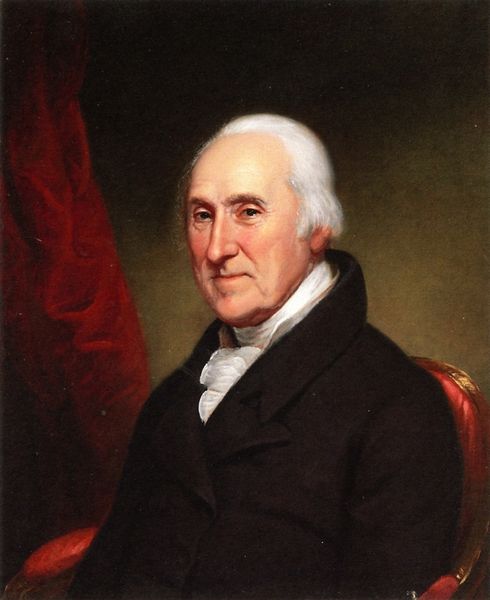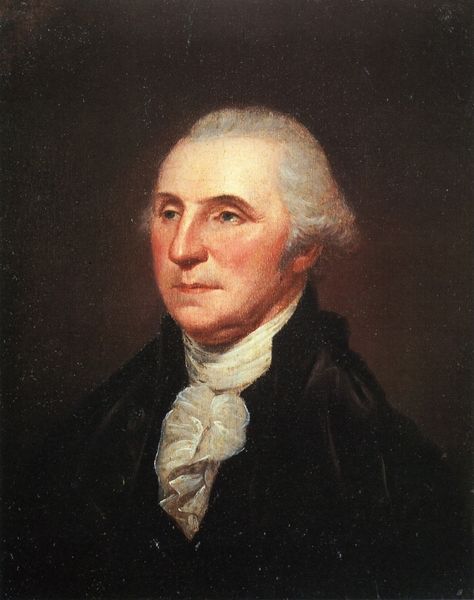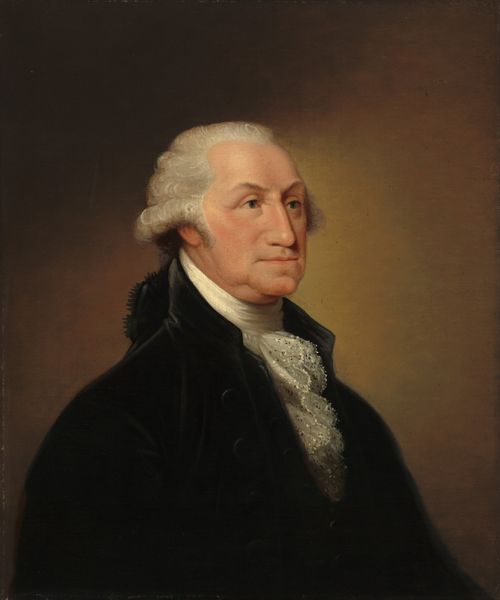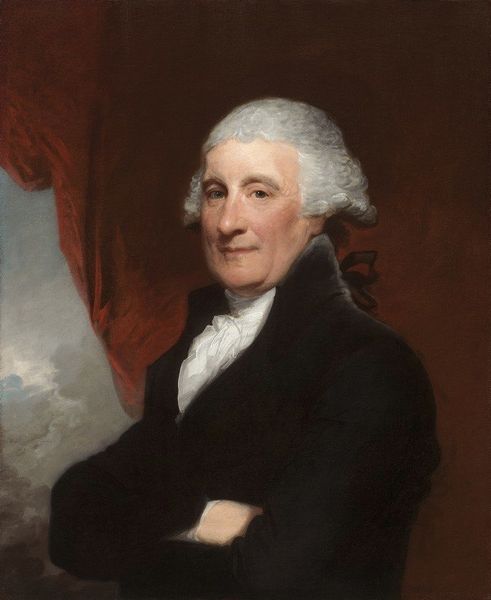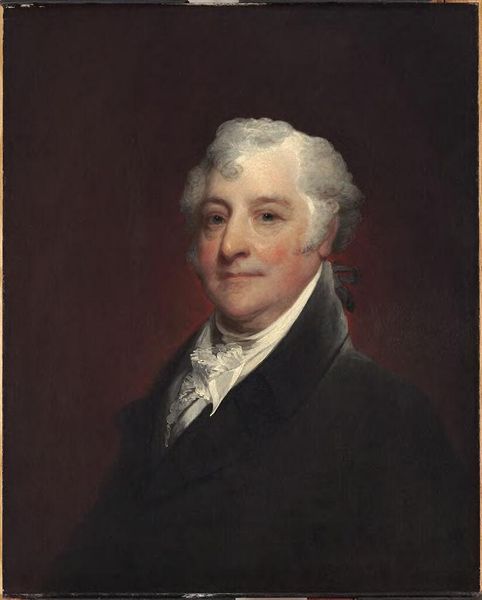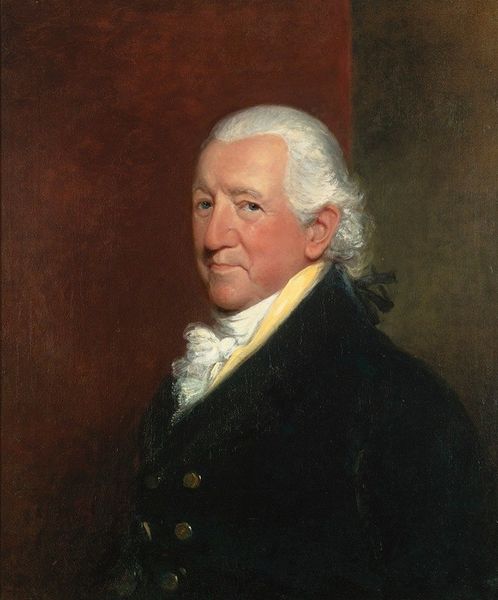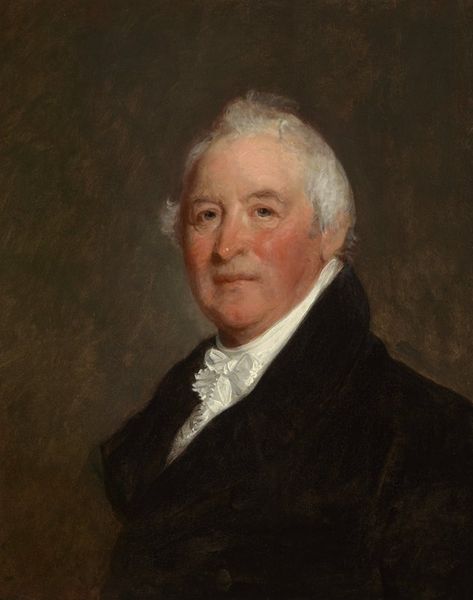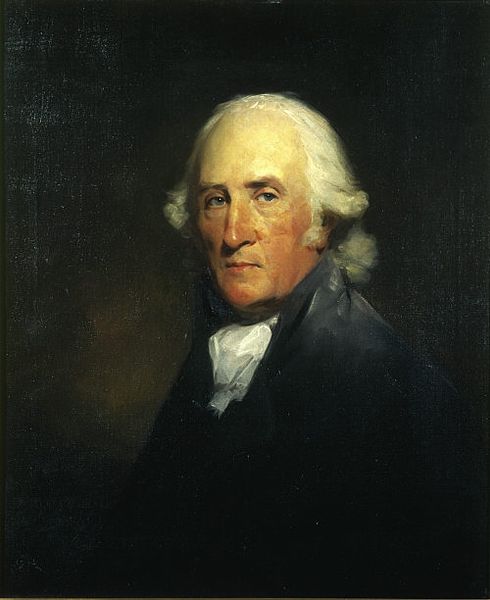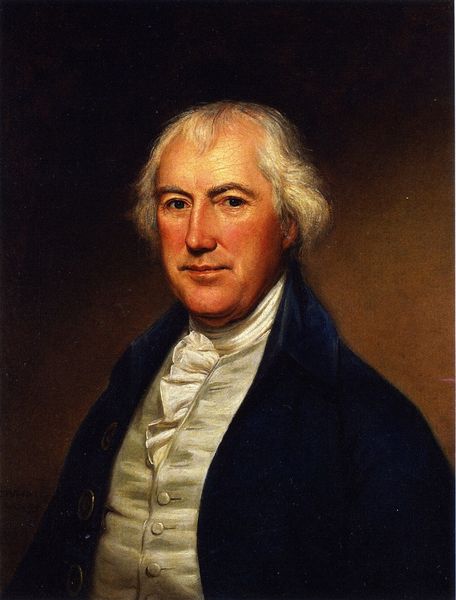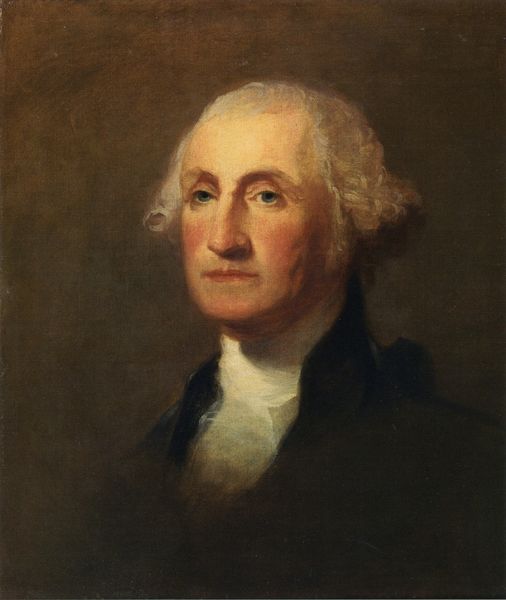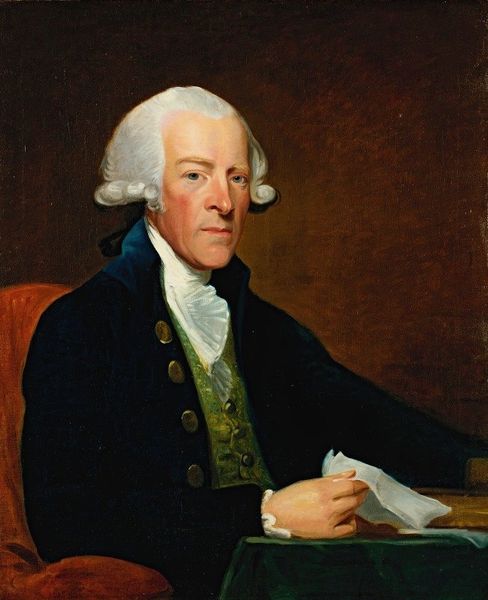
painting, oil-paint
#
portrait
#
figurative
#
neoclacissism
#
portrait
#
painting
#
oil-paint
#
figuration
#
classicism
#
history-painting
#
academic-art
Copyright: Public Domain: Artvee
Curator: Gilbert Stuart’s portrait of General Amasa Davis, likely painted around 1820, presents a study in understated authority. Editor: My first impression is of somber formality. The subdued palette and the man's composed demeanor create a very serious atmosphere. Curator: Precisely. Stuart, celebrated for his portraits of prominent figures like George Washington, employs a Neoclassical style here. Notice the subdued color palette, the emphasis on line, and the pursuit of an idealized likeness—all hallmarks of the movement. The symbolic language communicates status. Editor: I’m curious about the materials used. Oil paint, of course, allows for the layering and blending that gives the portrait depth, but think about the clothiers who would have tailored that coat, the linen workers who supplied the ruffled shirt. Each contributed to constructing Davis's image. Curator: The clothing, definitely more than mere adornment. It serves as a visual signifier, a coded language of status and respectability within that social stratum. The crisp white jabot against the dark coat emphasizes the face. Editor: It’s also a window into the early 19th-century economy. Raw materials sourced globally, crafted by artisans… even the pigments in the paint would have come from various locations. Curator: And speaking of faces, observe how Stuart captures the sitter's character. His direct gaze conveys both strength and a certain world-weariness. It's less about pure physical representation and more about conveying a sense of the man. Editor: It is all a matter of perspective, of course. Who commissioned the painting? Where was it displayed? How did that patronage shape the way General Davis was presented? The painting then is evidence not of what is apparent, but of what's hidden. Curator: It certainly prompts us to consider layers of historical interpretation. Stuart’s portrait acts as a repository of cultural memory, holding codes of conduct and projecting status. Editor: I find that looking at these paintings provides clues of forgotten economic realities and untold stories embedded within the materials themselves. Curator: Indeed, seeing portraits through a broader cultural and psychological lens truly adds richness to how we perceive this visual window to the past. Editor: Absolutely, and appreciating that labor contributes to a better understanding of visual artistry in all its facets.
Comments
No comments
Be the first to comment and join the conversation on the ultimate creative platform.

